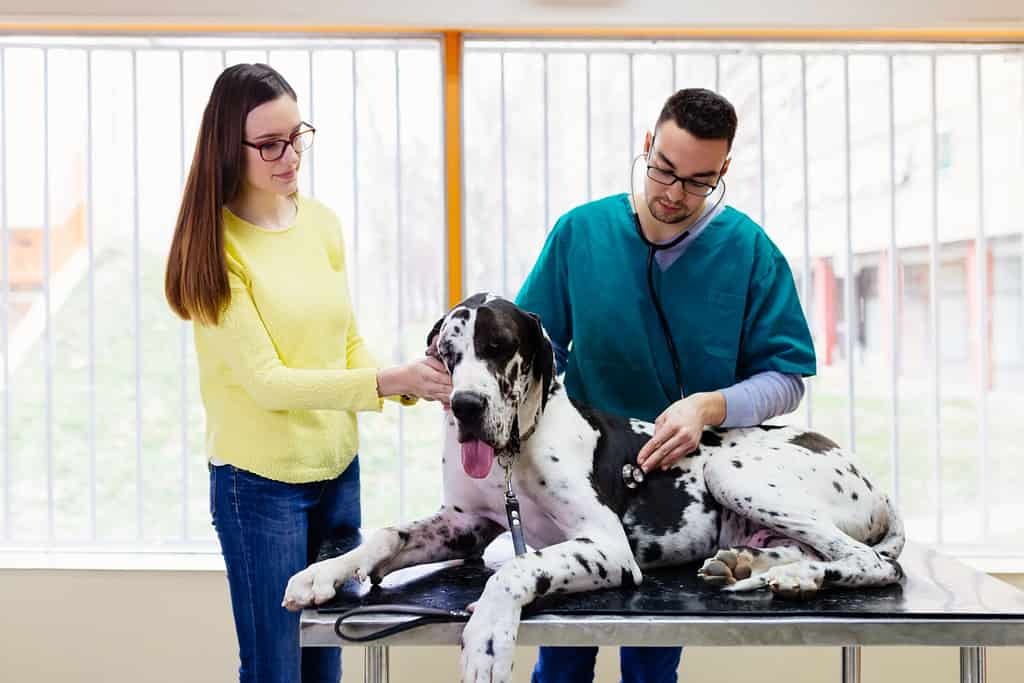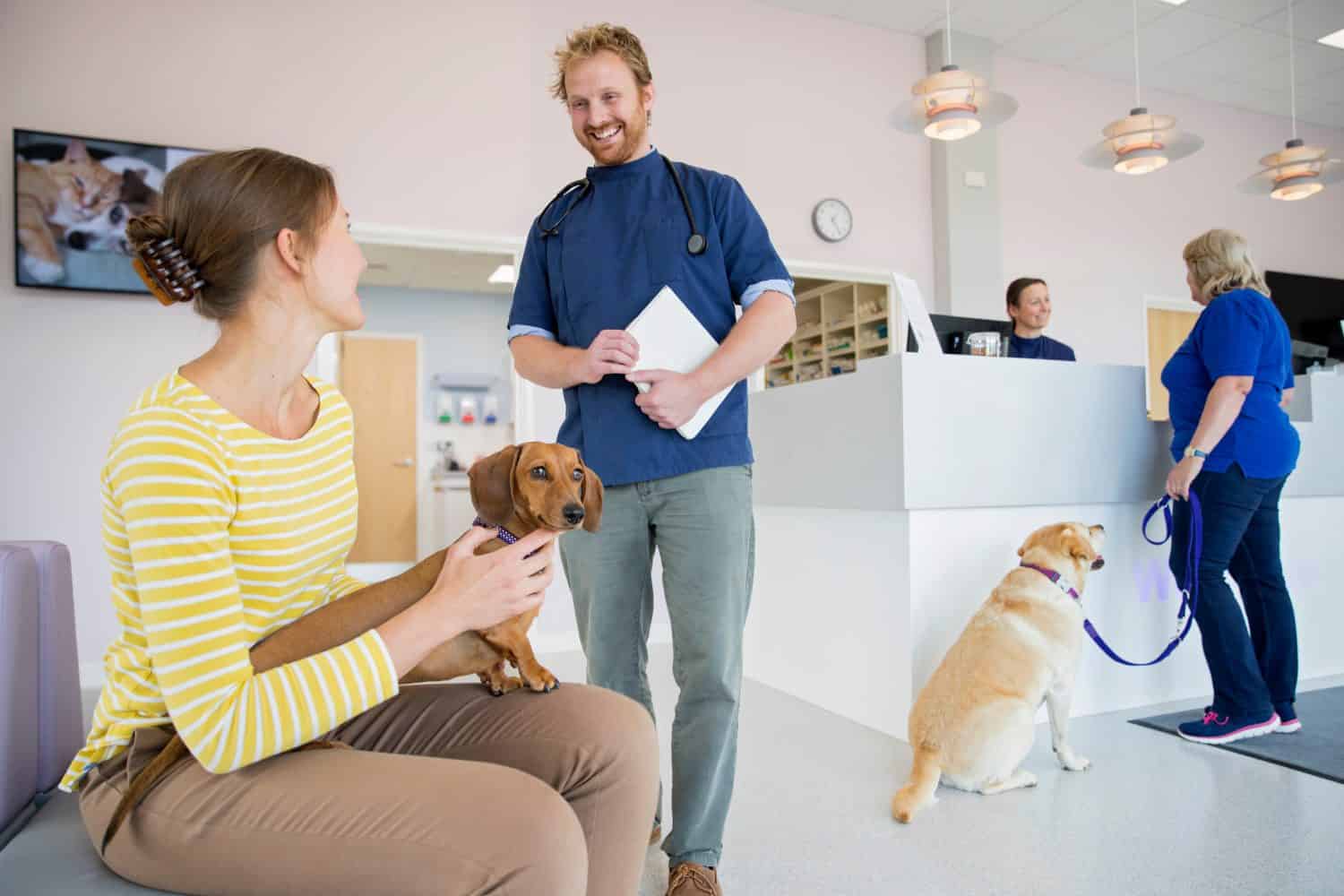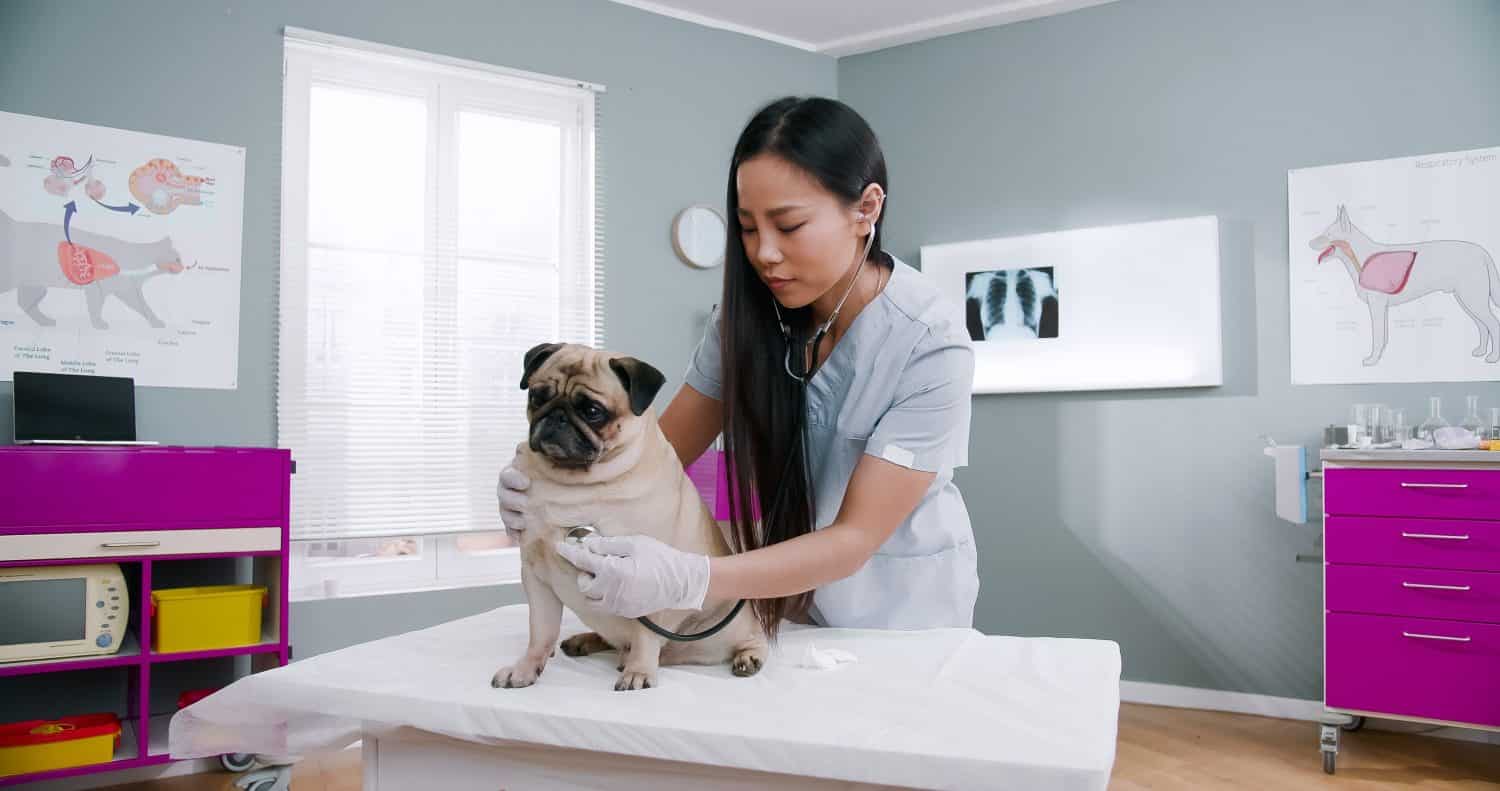Most pet guardians know that trips to the vet can be pretty stressful for the animals in their care. The sounds, smells, bright lights, often slippery surfaces, and handling by unfamiliar people can cause many pets to shut down or become defensive. Recent studies suggest that chronically stressful vet experiences can create lasting, lifelong negative impacts on pet welfare. Acknowledging how stressful the traditional vet clinic experience is for many animals, some veterinary practices are becoming certified as fear-free clinics.
So, what is a certified fear-free vet, and should you use one? Read on to find out.
What is a Certified Fear-Free Vet Practice?
A certified fear-free vet clinic will employ a range of practices to help reduce or eliminate sources of stress for pets during vet appointments. Stressed patients are a healthcare and welfare concern and a potential safety concern for clinic staff. Fear-free practices aim to move beyond traditional “get it done” veterinary handling and procedures. Instead, they seek to implement a more holistic approach to animal wellness—the American Animal Hospital Association and the company Fear Free offer professional fear-free certification following their courses.
Examples of Certified Fear-Free Vet Practices
Practices to implement a holistic, more compassionate approach to vet care can include the following:
- Counseling pet guardians on preparing pets at home for vet visits.
- Advising pet guardians on the use of pharmaceuticals and other therapeutics to help reduce stress before an appointment.
- Offering mock vet visits to acclimate pets to standard tools and equipment.
- Using non-slippery flooring as much as possible.
- Applying species-specific protocols to reduce stress in a range of patients.
- Implementing anxiety-reducing procedures for the waiting room and check-in/check-out process.
- Using patient history and information from the pet guardian to tailor emotional support plans.
- It implements considerate, compassionate approaches with patients, considering tone, body language, movements, and gentle handling.
- They use counter and classical conditioning to help patients feel more comfortable during the visit.
- They are identifying best practices for stress reduction and gentle control handling during the collection of blood samples and other necessary procedures.
- She discerns between procedures that must happen and those that can be delayed for the pet’s emotional health.
- We are implementing a stress assessment tool for trained staff to evaluate the patients’ stress levels throughout the appointment, beginning in the exam room or parking lot.
- Using the minimal amount of restrain necessary to complete a procedure.
Below, we’ll delve into some of the practices in more detail.

Certified fear-free vets implement a range of stress-reducing practices to support the emotional health of their patients.
©hedgehog94/Shutterstock.com
Counseling Pet Guardians on the At-Home Preparation
Some certified fear-free practices will provide information on preparing your pet at home for vet visits. This involves learning the basics of classical and counter-conditioning. This conditioning can help your pet feel positive emotions about space, experience, item, interaction, etc. Classical conditioning involves pairing something a pet perceives neutrally with something distinctly positive to form a positive association. The most famous example of classical conditioning in dog training is Pavlov’s pairing of the sound of a bell (the neutral stimulus) with food to create a positive association or positive conditioned emotional response (CER+). In contrast, behaviorists use counter conditioning to pair a stimulus perceived negatively by the animal (like the sound of a vacuum cleaner) with a highly positive experience to create a new, positive association.
At-Home Blood Draw Preparation
An example of preparing your dog for a vet appointment is using a retractable pen to replicate a blood draw. You’ll use high-value food to create a positive association. You’ll want to use incremental steps and move at your pup’s comfort level. To start, show the pen and then offer a treat. You can slowly move the pen toward your pet and offer a treat. Then place the pen against the area of your dog where the blood draw will happen. If your pet shows stress, take a step back and move at a slower pace. Offer food rewards at high frequency. Make sure the food is exceptionally high value to your pet. Finally, once your dog is comfortable, push the top (non-writing side) of the pen against your pet to stimulate the push of a needle. Reward and repeat these steps as needed. These steps may take days to complete before moving on to the next. Just remember to move at your pet’s pace.
Fear-Free Vet Practices: Patient Stress Reduction in the Waiting Room
Veterinary waiting rooms can be pretty noisy and chaotic spaces for pets. These spaces can induce a range of fear and anxiety responses for both the human client and the pet patient. Fear-free clinics will typically set up their waiting room(s) to reduce the stress on patients and clients. Stress reduction practices in the waiting room can include the following:
- The use of non-slip, secure flooring.
- He was speaking in neutral and calm voices as much as possible.
- Separating waiting areas for cats and dogs.
- Implementing elevated and enclosed platforms for cat carriers.
- When possible, They offer phone/online check-ins for patients who fare much better waiting in the vehicle with their guardian.
- They are instructing staff on considerate approaches and body language. This includes not staring dogs in the eye, not assuming all animals want to be pets, not leaning over anxious patients when possible, allowing the guardian to handle the pet as much as possible, etc.
- Instructing all staff on recognizing the signs of stress in dogs, cats, and other frequently seen species of the vet clinic.
- Ensuring adequate space of at least 1.5 body lengths between animals in the waiting room.
- Having accessible, rich-smelling treats available for dogs in the waiting room.
- Fostering a culture of prioritizing patient stress reduction through offering check-in forms that ask for a detailed history of the pet’s potential stress triggers in the vet clinic.
- Use visual barriers to lower the amount of visual stimuli experienced by pets in the waiting room.
- Playing soft, soothing classical music has been documented to decrease dog vocalizations and increase the time dogs sleep in kennels.

Practicing a considerate approach and allowing for adequate space in waiting rooms can decrease patient stress.
©Juice Flair/Shutterstock.com
Fear-Free Vet Practices: Stress Reduction in the Exam Room
Once a pet is in the exam room, it’s easy for clinics to prioritize getting through patients quickly and efficiently over the animal’s emotional well-being. However, certified fear-free vet clinics will prioritize running an efficient practice while also ensuring they implement stress reduction or elimination at every step of the visit. While in the exam room, this stress reduction can include the following:
- Using a considerate approach and gentle handling by the vet and vet assistants. An example would be disassembling a cat carrier rather than pulling a fearful cat out by the scruff.
- Offering high-value treats when possible.
- Using positive conditioning during muzzling.
- Interpreting signs of fear, including subtle signals, and adjusting approaches to reduce stress.
- Using one-way mirrors to monitor stable patients who are fearful of proximity.
- Installing noise-reduction designs into the exam room, such as solid rather than hollow-core doors, using quiet clippers, and setting up nonslip mats on tables.
- Wearing coats and scrubs that are in soft hues in the yellow to violet range rather than bright white, orange, and red.
- Allowing pet guardians to be present and offer comfort to their pets as much as possible during the exam and procedures.
- Allowing guardians who have worked on cooperative care techniques with their pet to implement these practices such as chin rests and consent signals.

From not wearing bright white clothing and practicing gentle handling, certified fear-free vets can reduce exam room stress for their patients.
©VesnaArt/Shutterstock.com
Certified Fear-Free Vet: Should You Use One?
Using a certified fear-free vet practice is an excellent way to help ensure the emotional welfare of your pet. It may also prevent your pet from developing severe and long-lasting adverse effects from stressful or chronically stressful vet appointments. One of the easiest ways to search for a certified fear-free practice is to use Fear Free’s directory of accredited clinics.
The photo featured at the top of this post is © Pressmaster/Shutterstock.com
Thank you for reading! Have some feedback for us? Contact the AZ Animals editorial team.







